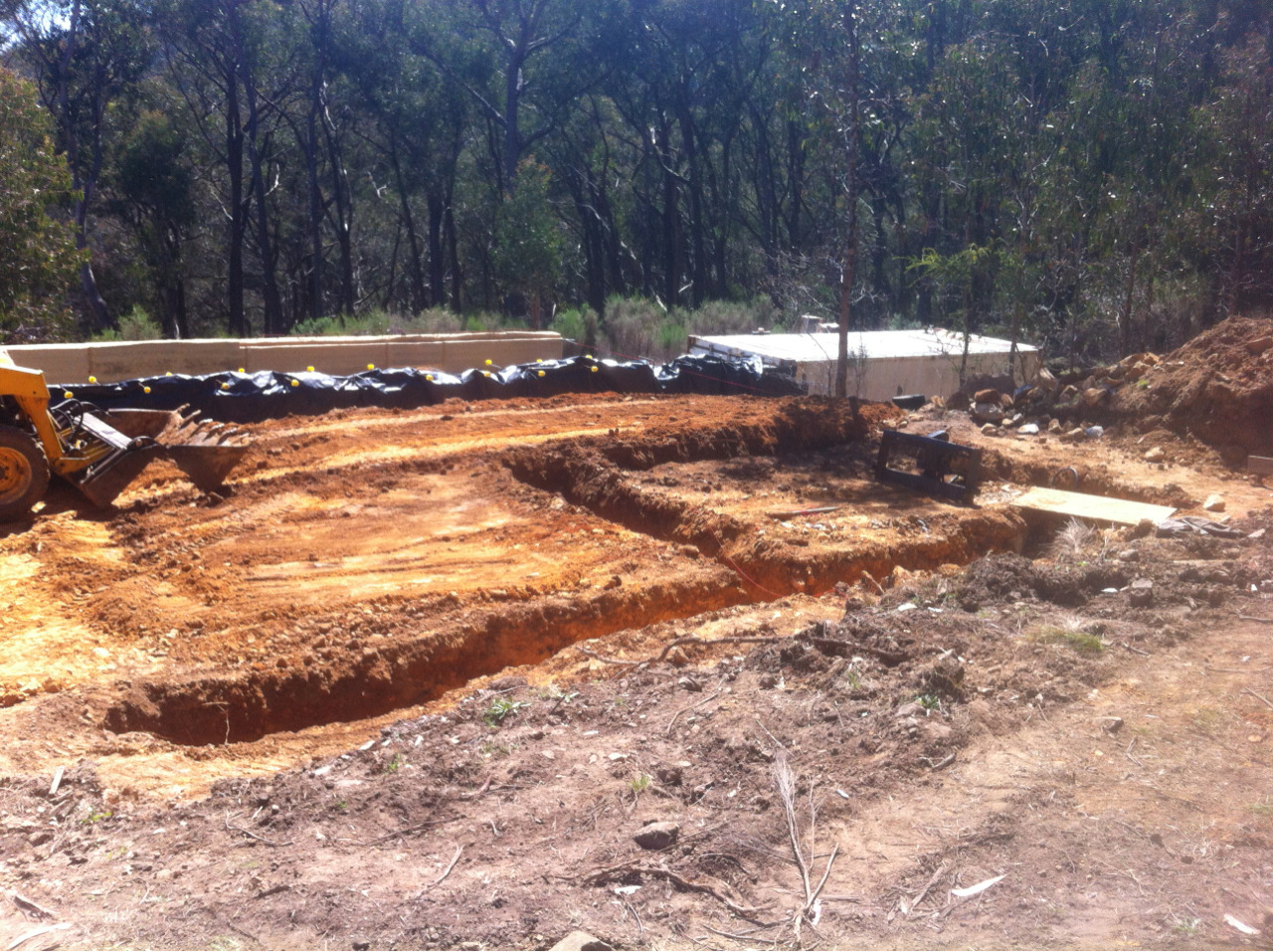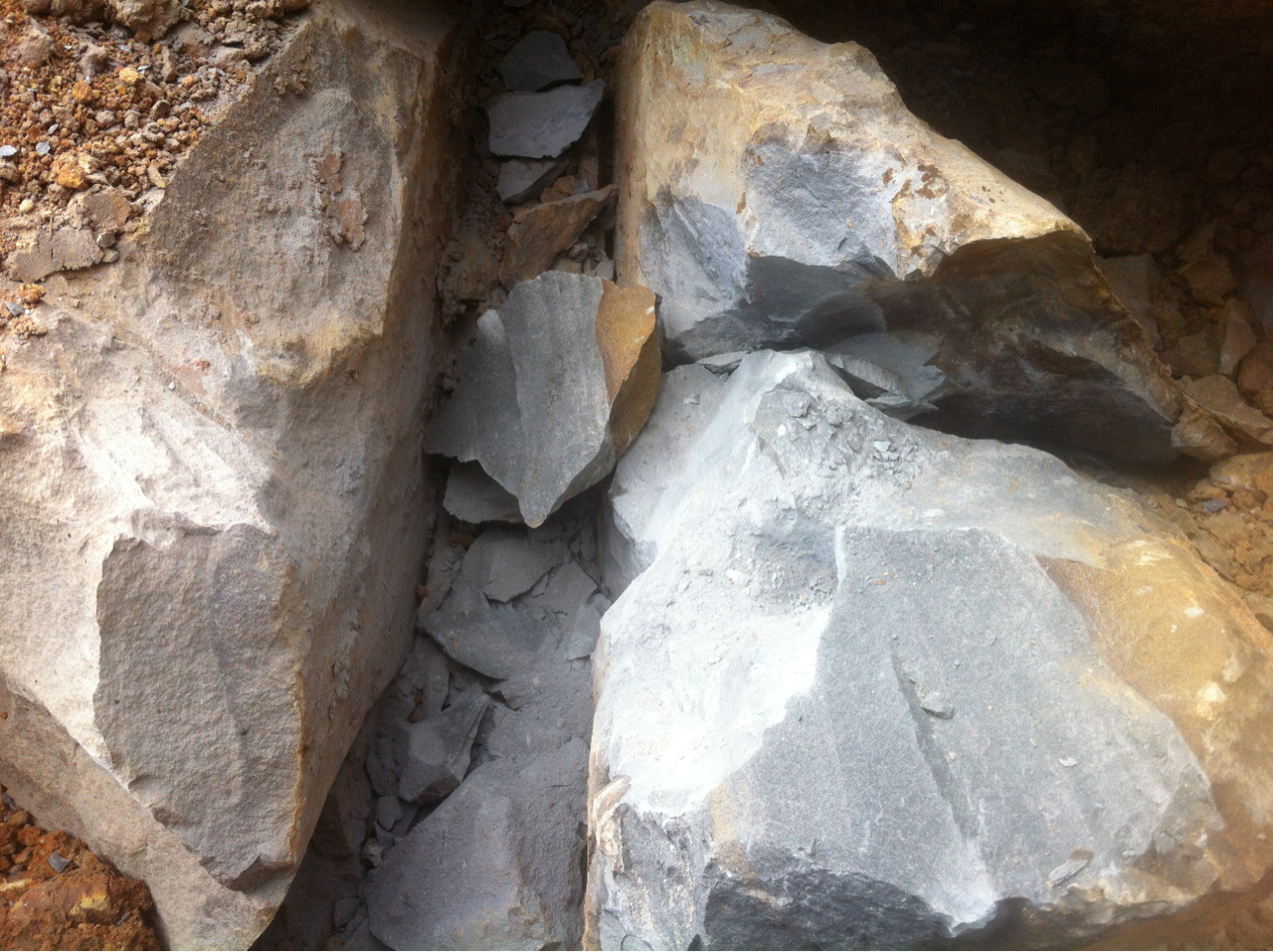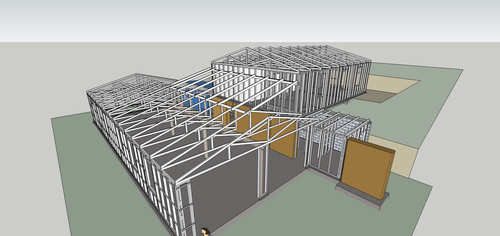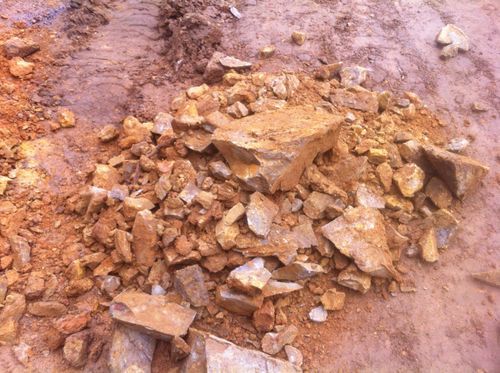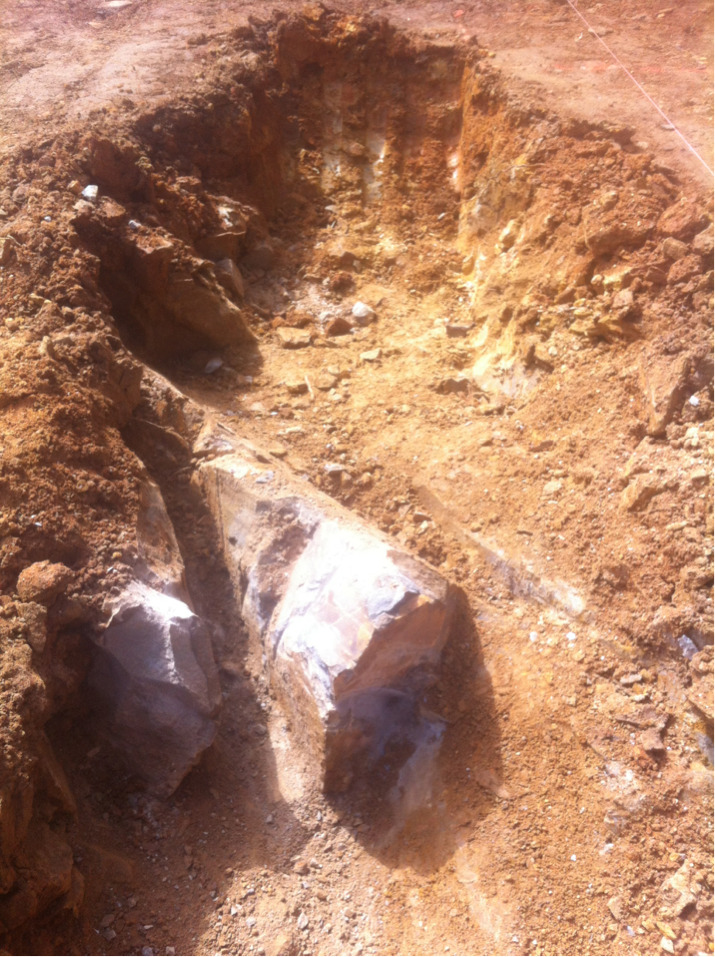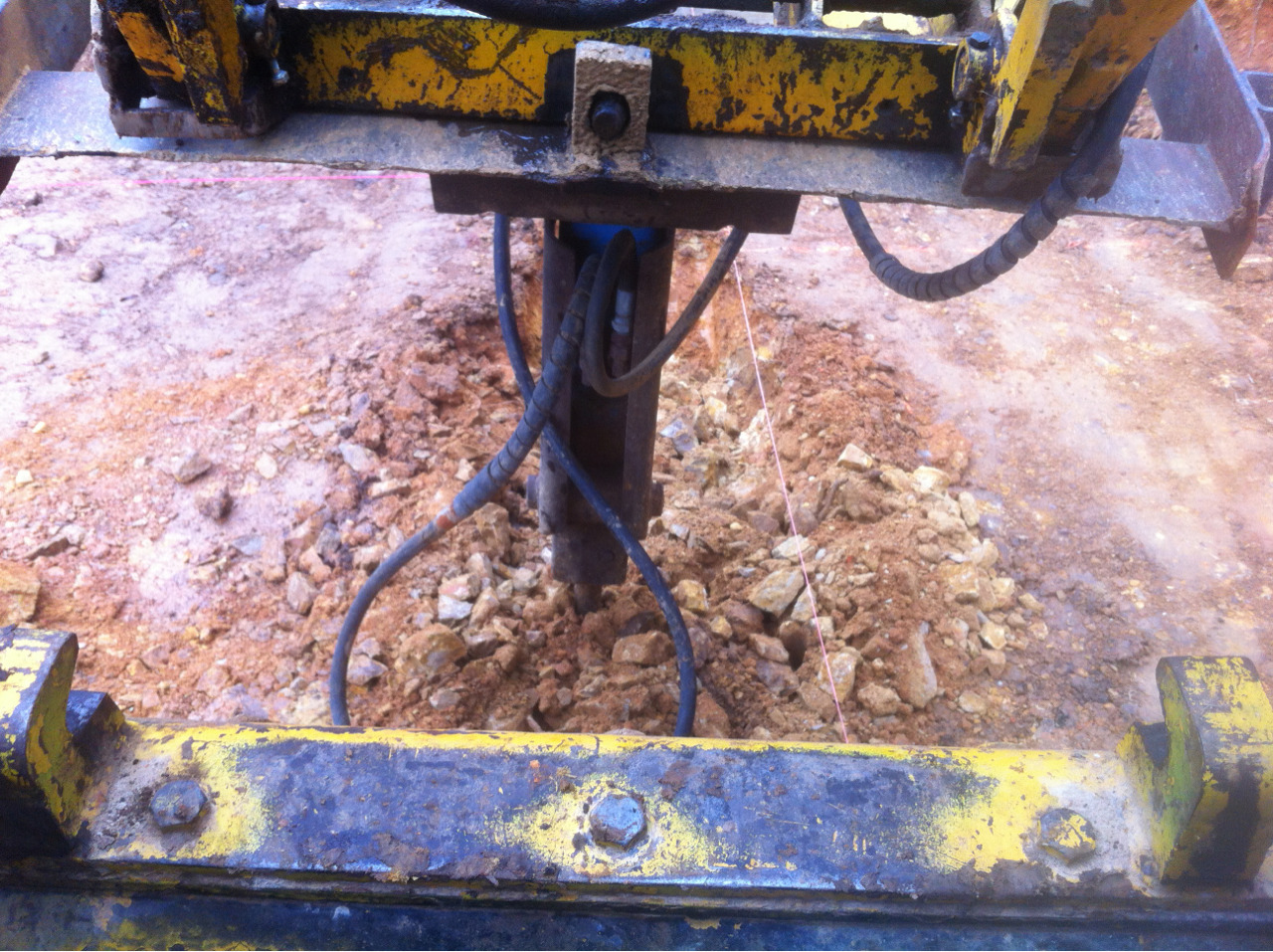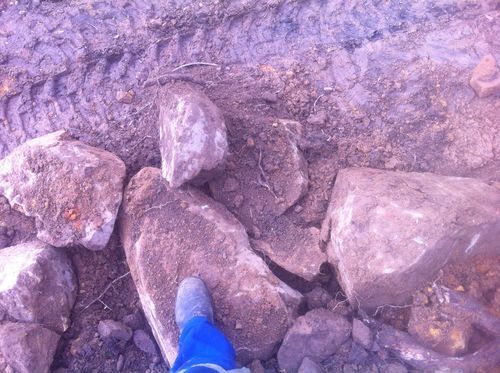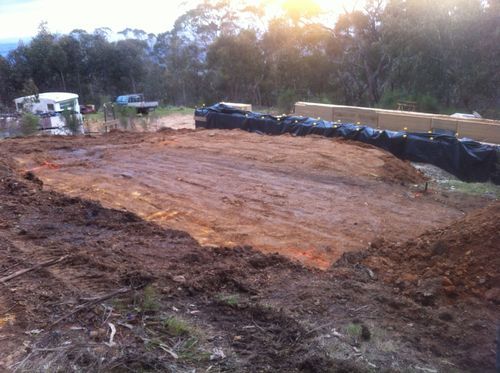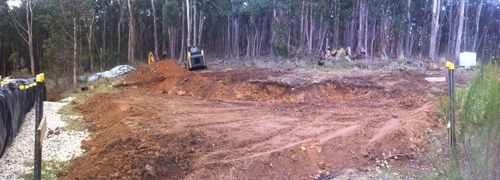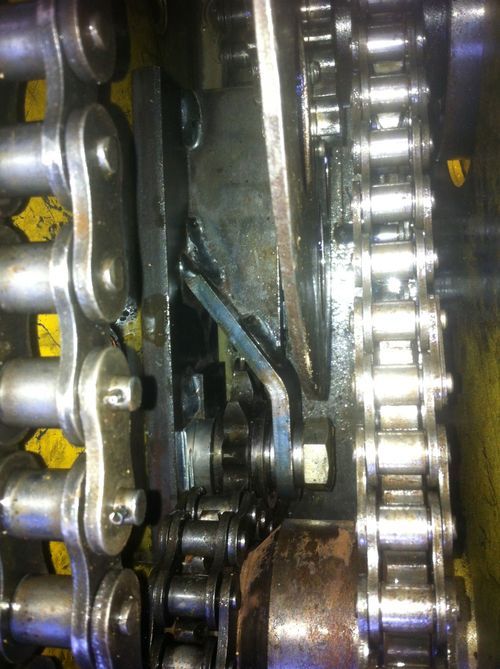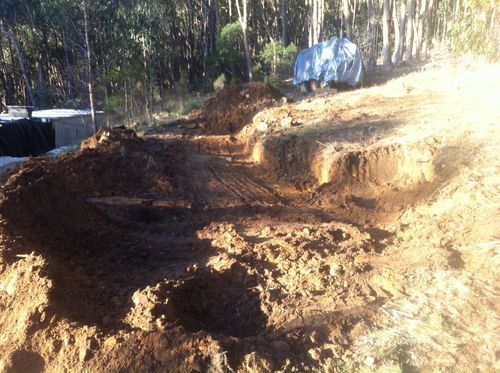So it’s been a few months since I completed the rammed earth walls, and it’s been interesting watching them evolve during the winter months.
The first and most obvious change has been that the “tiger stripes”, which ended up being a film of rubber left behind by the rubber ramming head on the pogo stick, have faded almost entirely in the weather. I’m still a little undecided as to whether this is a good thing or not - I originally disliked them, believing that they marred the natural aesthetic of the rammed earth, but I have come to see them as part of the story of the wall so part of me is sorry to see them fade.
Besides that, the walls haven’t changed very much at all. The bases of a couple of the panels have been almost continuously submerged in a centimetre of water through the winter as there’s a slight low spot in the slab, but they appear to be totally unaffected by this. There’s no staining nor change in their structure, so I guess the Plasticure additive really does work as well as they suggest.
Now that the weather is starting to warm up a little and the atmosphere is drying out though, I’ve noticed that the panels are starting to shrink ever-so-slightly. Each of the control joints is opening up just a fraction:
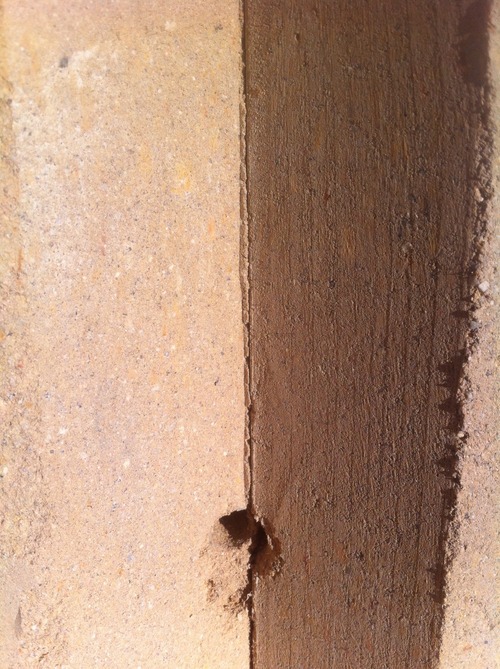
This is a very good thing, as it means they’re doing the job they were designed to do and the panels themselves are not at risk of cracking in more unsightly (and structurally hazardous) ways.
With that said however, I have noticed one or two very fine hairline cracks appearing horizontally in the walls, along layer boundaries.
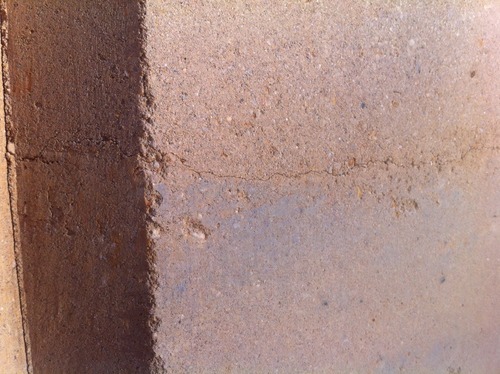
I’m not at all concerned about these - I would have been astounded if there were none as the walls shrunk, and even without the internal reinforcement I doubt they’d cause any structural worries at all.
It won’t be long now before the wall starts taking its load - the suspended concrete slab will be poured in the next month or two. It’s going to be great seeing these little parts of the project all coming together :)

